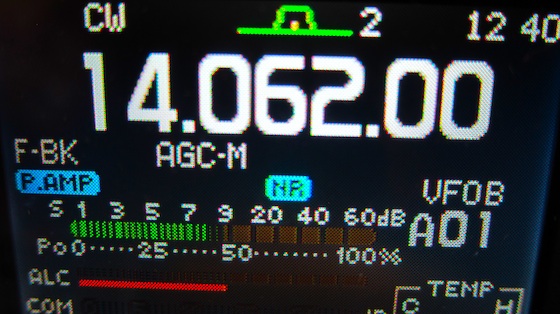If you’re just getting into amateur radio and Morse code, then you’ll need to get up to speed on what RST means and how to use it properly.
The acronym RST stands for: Readability – Signal Strength – Tone
If you’re operating phone or voice, you’ll give just the first two, the R and the S.
Perhaps you’ve heard a fellow operator come back to you saying:
” (Insert your call sign here) you’re five by nine here in Pie Town, New Mexico.”
Or he might say, “You’re five nine here in Pie Town, New Mexico.”
The first number, “five” is a measurement of readability. It’s how clear your voice is.
Here’s where you can get confused. A completely clear transmission doesn’t have to be strong at the same time. The incoming transmission could be very weak, but you can understand each word said – as if someone’s whispering in your ear. That’s why the operator would deserve a 5 on the readability scale.
The second number “nine” is a measurement of the strength of your voice to the other operator. A nine, the highest value you can assign, would mean your voice was as strong as if you were in the same room with him and talking at a normal volume.
You can see those “S” scale markings in the photograph below.
Modern radios tend to have digital readout signal strength meters. They can help you with the S component of the report. Here’s a photo of the digital meter on my ICOM 7000 radio picking up a Russian station sending Morse code that was producing an eight for signal strength.

See the green lines and where they stop between the 7 and the 9? That means the signal strength is an 8. Photo credit: Tim Carter – W3ATB
When you decide to do Morse code, you add another component – Tone.
As you might expect, assigning values to something you hear is subjective. You may have young ears that didn’t get damaged by 20-plus years of working with screeching circular saws like mine. Back when I was a young carpenter, no one told us about ear plugs or ear muffs so I’ve got both hearing loss and significant tinnitus.
This means that your signal to two different operators sitting is the same room listening to the same speaker might produce two different reports!
Use the following tables that I borrowed from the Straight Key Century Club. They are an excellent source of information if you’re just discovering the magic of Morse code.
Study these and do your best when giving a realistic signal report. Don’t ever embellish a report. Most operators want the truth and they want to know how band conditions are between your station and their location. There’s no shame in giving an operator a 329.
Oh, one more thing. As you enter the world of contesting, the RST report goes out the window. It seems everyone, no matter how weak their signal, gets a perfect report of 599!
R: Readability
1 — Unreadable
2 — Barely readable, occasional words distinguishable
3 — Readable with considerable difficulty
4 — Readable with practically no difficulty
5 — Perfectly readable
S: Signal Strength
1 — Faint signals, barely perceptible
2 — Very weak signals
3 — Weak signals
4 — Fair signals
5 — Fairly good signals
6 — Good signals
7 — Moderately strong signals
8 — Strong signals
9 — Extremely strong signals
T: Tone
1 — Sixty cycle A.C. or less, very rough and broad
2 — Very rough A.C., very harsh and broad
3 — Rough A.C. tone, rectified but not filtered
4 — Rough note, some trace of filtering
5 — Filtered rectified a.c. but strongly ripple-modulated
6 — Filtered tone, definite trace of ripple modulation
7 — Near pure tone, trace of ripple modulation
8 — Near perfect tone, slight trace of modulation
9 — Perfect tone, no trace of ripple or modulation of any kind

I do strictly digital , and give the reports as 59 when I can read their reply, If the words are not quite readable, then I might drop the Readability portion down appropriately, because it’s usually due to QRM.
I’ve had guys call me on it, but I tell them exactly what you have told others, the other 9 in digital is not necessary, it was designed in 1936 for Morse use and Voice.
Nice article
Robert AC2MM.
This really helped me..I never know what to say to the other station and am just now after all these years getting into CW…Thanks again.
Pingback: Veteran's Memorial Ski Area | W3ATB
Relying on your S meter for signal reports sometimes leads to reports such as 519. I’ve actually received that report a few times over the years.
Thanks Craig! That’s why I decided to write this post because I find there’s lots of confusion out there.
My goal was to try to make it as simple as possible to understand. What’s worse is some operators get the numbers backwards. “You’re 9 over 5.”
If it’s RST, then as we know in Morse you report the numbers in that order. R then S then T. So the phone guys should be R then S.
But what do I know? I’m by no means the RST expert! Thanks for your comment!